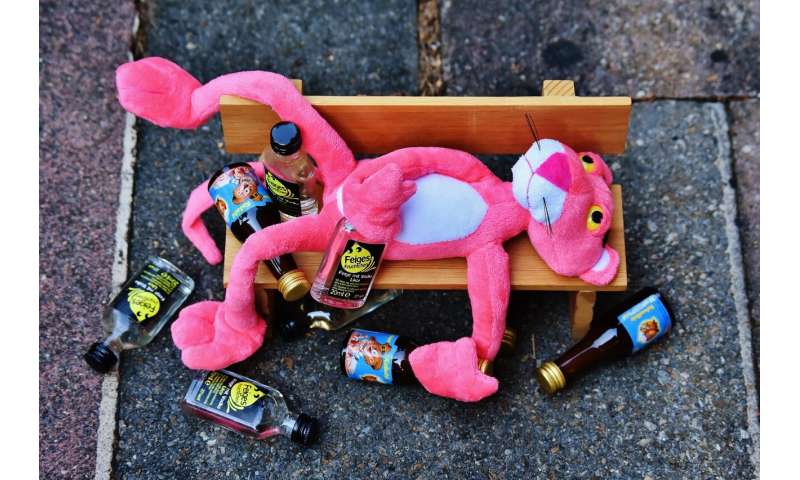
Researchers at the University of South Australia’s Ehrenberg Bass Institute for Marketing Science have found that despite predictions that the lockdown might cause a spike in alcohol consumption, the truth is, there was very little change in people’s drinking habits during the restrictions.
Not only did overall wine consumption rates remain reasonably stable, but people tended to buy their wine from the same places and drink wine on the same occasions.
In a new paper—How has wine and alcohol purchasing and consumption changed during COVID-19 isolation in Australia? – UniSA researchers found that across red and white wine, beer and spirits, only 15 to 18 percent of respondents reported drinking more often than before lockdown.
Between 82 and 85 percent of those surveyed were consuming none, less or about the same of all types of alcohol as they were before the lockdown.
Research lead, Professor Larry Lockshin says the representative survey of Australian wine consumers conducted in May this year, will form part of a wider international project being undertaken by the Academy of Wine Business Research across 11 countries to compare how different countries and cultures reacted to pandemic isolation measures.
“Despite a lot of predictions about how people would drink more, how they might join online wine tasting groups or party and drink with friends online and even buy their alcohol online—the survey has shown there has been very little change in buying and consumption habits in Australia,” Prof Lockshin says.
“We also asked our respondents where they were buying their wine during the COVID-19 lockdown. Again, there were no major changes in purchasing behavior after lockdown. Many respondents did not purchase wine from online retailers (57% did not), winery websites (61% did not), or cellar doors (62% did not) during lockdown. Most shoppers stuck with their regular retail outlets.
The online figures especially seem to show that much of the sales volume from those outlets were the same customers just buying more; not a large influx of brand-new customers.
“Early data showing a spike in alcohol purchases in March, have been followed by fairly sharp declines in sales of beer and cider, spirits and wines in April and May, according to BeverageDaily.com (2020), which would suggest, much like with groceries, people were stocking up ahead of the shutdown,” Prof Lockshin says.
“Based on our research, Australian alcohol consumption appears to be relatively unchanged by the pandemic and it will be interesting to see if that changes as consumers are once again able to go to restaurants bars and clubs and drink in real time and in real life with their friends.”
This research was based on a survey of almost 270 Australian wine consumers between 18 to 65+ and was split equally between men and women.
A recent Australian survey has revealed that the buying habits of alcohol consumers has not changed as dramatically during the COVID-19 lockdown as suggested in some media reports.
The Ehrenberg Bass Institute at the University of South Australia conducted a survey of alcohol consumers in May 2020. The researchers—Larry Lockshin, Armando Corsi and Johan Bruwer—share the following findings of their survey, with the full results to be published in the forthcoming August issue of the Australian & New Zealand Grapegrower & Winemaker magazine.
There has been a tremendous amount of press relating to how people’s behavior has changed, or not changed, during the isolation phase of the COVID-19 response in Australia.
Several articles have touted huge increases in alcohol sales and consumption caused by consumers isolating at home (e.g., ANU 2020; Sydney Morning Herald 2020).
The Ehrenberg Bass Institute at the University of South Australia conducted a representative survey of Australian wine consumers in May 2020 to understand their wine buying and consumption during the COVID-19 lockdown.
This survey is part of a larger international project undertaken by the Academy for Wine Business Research (AWBR) across 11 countries to compare and understand how different cultures reacted to their country’s isolation measures.
The survey was answered by 269 Australian wine consumers, fully representative in gender, age, and wine consumption of the Australian wine consuming population.
We asked a series of questions regarding consumption before COVID-19 isolation and then asked how each person’s consumption had changed during isolation for red wine, white wine, beer and spirits.
Overall, those consuming none, less or about the same for all alcohols was between 82%–85%, so only 15%–18% consumed more. This is far different than the reported huge increases in alcohol consumption reported by some media.
We also asked our respondents where they were buying their wine during the COVID-19 lockdown. Again, there were no major changes in purchasing behavior after lockdown.
Many respondents did not purchase wine from online retailers (57% did not), winery websites (61% did not), or cellar doors (62% did not) during lockdown. Most shoppers stuck with their normal retail outlets.
These figures are for shopping and we did not ask about volumes, so it is likely that many consumers shopped their regular outlets but bought larger amounts of wine at least initially.
The online figures especially seem to show that much of the sales volume from those outlets were the same customers just buying more; not a large influx of brand-new customers.
In conclusion, we learned mainly that consumers did not change dramatically what they drink, for which occasions they drink, or where they buy their wine.
Contrary to some of the media hype, we found that about only 15-18% of our respondents reported drinking more often than before lockdown.
Many reported drinking less or not at all. In fact, a recent report by Beverage Daily.com (2020) showed after a brief upsurge in sales during the initial stages of lockdown in Australia in March, sales of beer and cider were down 50%-60%, spirits 21% and wine 7% during April and May.
There is not an epidemic of increased alcohol consumption, and the most likely cause of the (temporary) upward spike during lockdown was stocking up because of uncertainty of supply.
We saw that people shopped mostly the same types of outlets they shopped before COVID-19 restrictions; however, we did not measure the amount of wine bought per shopping occasion.
Given some reports showing large increases in online sales, we would expect consumers bought more bottles per occasion after the restrictions.
It would be interesting to see whether the next few months will bring a change in the patterns we observed through the data collected in May 2020, or whether the situation will remain steady.
At this point in time, we see that overall consumer behavior for wine buying and consumption has not changed dramatically during the pandemic restrictions in Australia, except of course the temporary elimination of on-premise buying and consuming.
Source: Read Full Article


